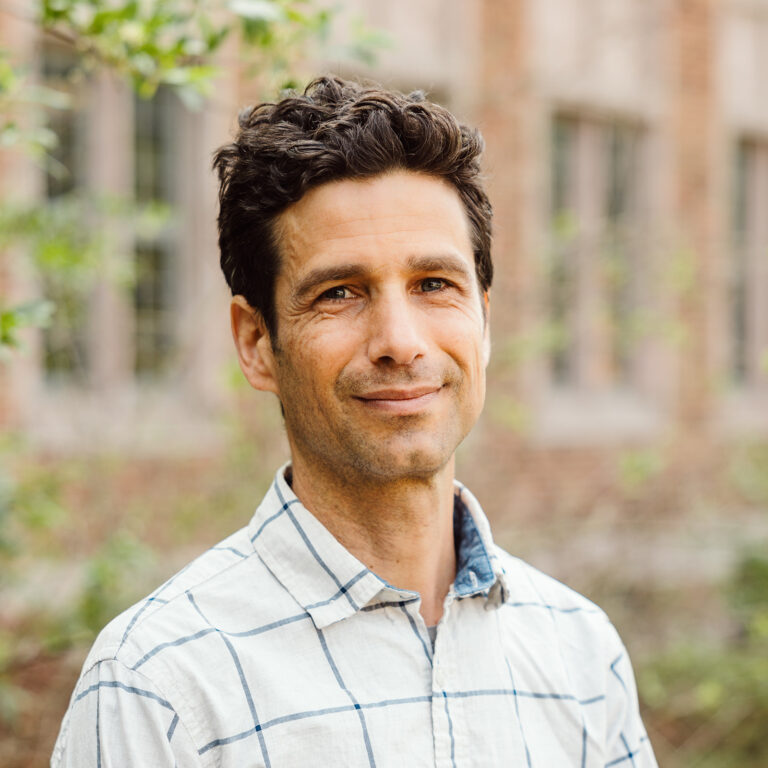Research Affiliate
Brook is a research engineer at the UW, where he investigates the life cycle of building materials — their manufacture, use, and end-of-life — and the environmental impacts that accompany those processes. He also studies and aims to improve the methodologies and data behind the measurement and communication of those environmental impacts. At the CLF, he has been particularly involved in supporting the EC3 tool and developing the CLF Material Baselines.
by Brook Waldman
I’ve been working for CLF in various temporary capacities since 2019, but now that I’m here as a permanent staff, let me introduce myself.
I spent formative years working with youth as a teacher and wilderness leader. I taught high school math (I can sing you a song about the quadratic formula) which was mostly about getting people more comfortable with – less afraid of – the abstract mathy-ness of math, and about learning and applying problem-solving principles.
I taught a course called “Environmental Seminar” where a big part of the class was about discovering connections between our everyday world and the systems and processes behind those things. Where does our food, our electricity, our stuff come from? And where does it go when we get rid of it? We visited a cattle farm, a coal-fired power plant, and the local dump. (The dump worker hated spring mattresses because they always seem to float up to the top even after driving over them with their enormous tamper-downer-smusher machines.) We looked at the current linear paradigm of extraction-use-disposal, and at other models, like a landfill facility that used the recovered methane gas to power a glass furnace and pottery kilns for visiting artists, and a greenhouse for native plant starts, all at the landfill site.
In these teaching roles, I was an interpreter – helping to make technical concepts and information more accessible to people who might use them to make their lives better, to make the world better. I had never heard of LCA in my teaching days, but the seeds were there as my students and I drew cartoon diagrams on the board, trying to trace back our stuff to raw materials and energy sources.
I later studied architecture, and during that time I was formally introduced to LCA (thank you to Erin Moore at UO!). This was indeed a happy meeting – an endeavor that included buildings, math, sustainability, and the tracing back of where stuff comes from and looking ahead to where it goes.
My big LCA research project as a graduate architecture student was assessing the embodied vs operational carbon trade-offs to upgrade the design of a muti-family building to the ultra-efficient PassiveHouse standard. (You add a whole bunch of insulation and sealing tapes and better windows and a heat recovery ventilator, and then you reap the benefits. What’s the tradeoff? What’s the carbon payback period?) We had a perfect subject to study – real-life twin buildings that were being designed at the time – one to a more conventional energy standard and one to PassiveHouse.
At CLF as a “data and methods” researcher, I’ve mostly focused on product-scale LCA. I’ve had the pleasure to support Building Transparency’s EC3 tool from before its launch, to work on multiple iterations of the CLF Material Baselines (where I’ve looked at a gazillion EPDs), to serve on PCR committees, and to investigate the relationship of our data and methods work with the bigger-picture policy landscape. In most of these cases, I see my role as a not-too-distant-cousin role from my math teaching days. I’m digging into the data and just as importantly I’m working on figuring out how to make that data more accessible and meaningful and useful to the people that could use it.
I am happy for the chance to keep on doing this work, to continue to ask questions and advocate for an LCA data ecosystem of continuous improvement, and to support people trying to make decisions that make things better.

Foraging for mushrooms with my little crew: very few mushrooms; lots of fun.

“I spent formative years working with youth as a teacher and wilderness leader. I taught high school math (I can sing you a song about the quadratic formula) which was mostly about getting people more comfortable with – less afraid of – the abstract mathy-ness of math, and about learning and applying problem-solving principles.”